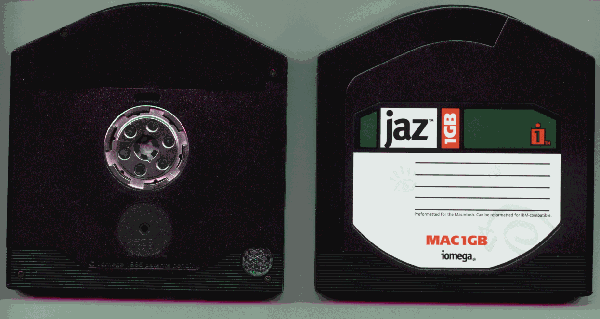Memory
There are lots of ways you can store an electronic (soft) copy of your
files. The major storage devices available are: Tape, 3.5 inch Floppy Disk,
Hard Disk, CD-ROM disk, CD-ROM write disk, Zipp disks, Jaz disks, and
Flopticals. The newest technology is DVD disks.
Tape
Data and information is stored on a magnetic tape. These look like small cassette tapes. The major disadvantage if tape storage is that it is sequential. Every time you want to find something on the tape, the computer has to start at the beginning of the tape to search for it.All other methods of storing data and information are random access. The computer finds out where the information is and goes directly to that location.
Floppy Disks
A floppy disk is one that you put in a disk drive. The ones available today are 3.5 inches wide and have a hard plastic cover.Inside the disk is a circle of magnetic material (like what is in a cassette tape).
The silver bits protect this magnetic material. To read or save something on your disk, the disk drive pushes back the silver square at the top of the disk. A head (it looks like a toothbrush) extends over the square in the protective casing that the silver bit usually covers. The magnetic disk inside the casing spins rapidly. The required data or information is read by the disk drive head from the magnetic disk.
If they are fiddled with, the spring inside the silver bits can come loose. Then the silver cover may break off and could even lodge in your disk drive. You will not be able to use that disk any more.
Moving the silver bits increases the risk of dust making its way inside the protective casing and on to the magnetic disk. Where ever the dust settles, you will not be able to use that part of the magnetic disk.
How a Disk Drive Works.
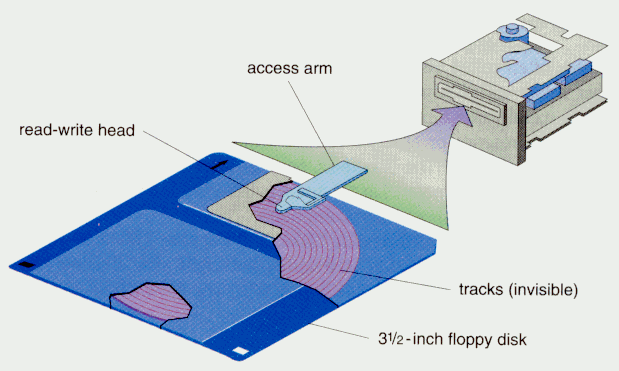
Things that can cause a Disk Drive to not work.
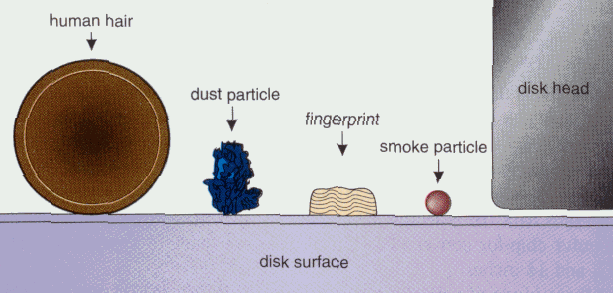
Care of Floppy Disks
Do not bend the disk.
Do not put heavy weights on the disk.
Do not write on the disk with sharp objects.
Do not touch anything visible inside the protective cover.
Do not expose disks to strong magnetic fields.
Do not expose disks to extreme heat.
Do not expose disks to chemicals.
Hard Disks
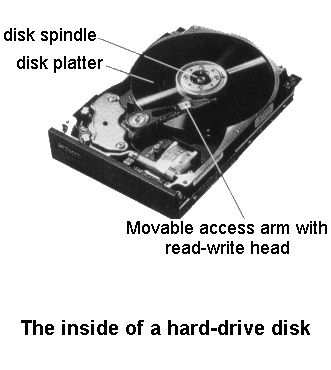 |
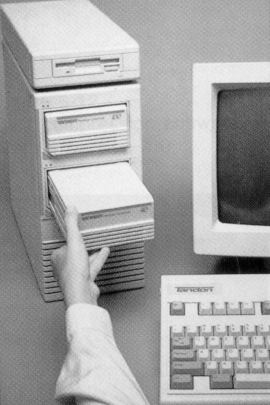 |
CD-ROM
CD-ROMs work very differently. The name is an acronym for Compact Disk - Read Only Memory. You cannot save information or data to a CD-ROM using a normal CD-ROM drive. The information or data on CD-ROMís is recorded on it by the manufacturer.A CD-ROM stores information and data using light beams. The data is burned into the disk on a spiral track as a series of pits and islands. A coloured laser beam reflecting off this track reads the data and information on the disk.
Some CD-ROMs are writeable. You can save information to these disks. They can be used only once.
How a CD-ROM Drive Works
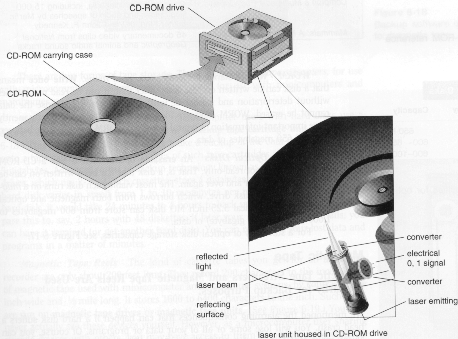
zipp Disks
Zipp disks are approximately 3.5 (9 cm) inches wide. They are thicker than floppy disks.Zipp disks store data and information in a similar way to floppy disks. They hold 100 Mb. They need to be formatted before use.
Jaz Disks
Jaz disks are approximately 3.5 inches (9 cm) wide. Jaz disks are thicker than Zipp disks (about 1 cm thick).A Jaz disk works like a hard disk does. They holds 1 Gb. They need to be formatted before use.
Flopticals
A floptical is a floppy disk that stores information using optical technology. It looks like a floppy disk.DVD-ROM
DVD-ROM disks are the newest technology. They look like a CD-ROM and store data and information in a similar way (using pits and islands). They cannot be formatted and have a far greater storage capacity than CD-ROMs. One single sided DVD-Rom holds 4.7 Gb. In the future, double sided double layer platters will hold 17 Gb per disk.
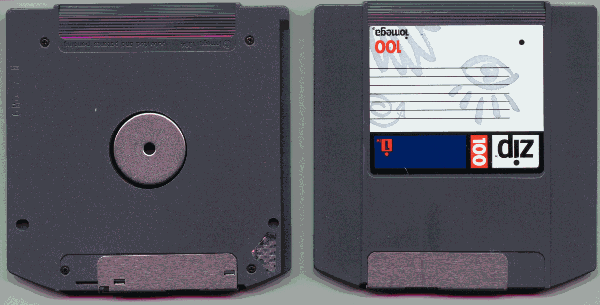
A Zip disk(above) and a Jaz disk(below)
